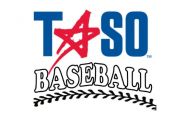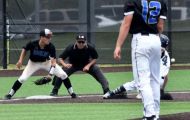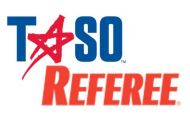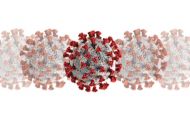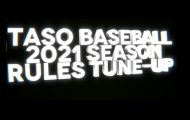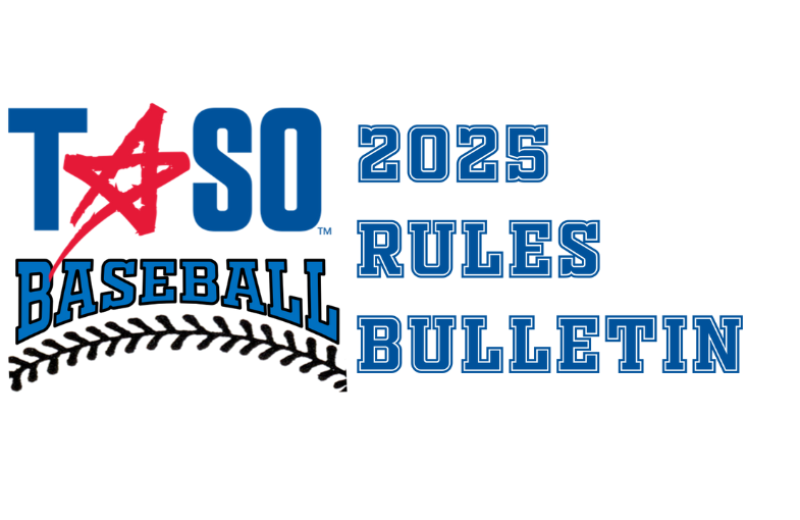
2025 RULES BULLETIN #3
The count on the batter was two balls and one strike, nobody on and two outs in the third inning. The pitcher in his windup threw a fast ball over the heart of the plate about waist high. The batter with a steady, balanced, and powerful swing launched the ball over the 375 – foot sign in the left center alley – a home run. Spectators and teammates cheered wildly as the proud player cruised around the bases and then headed to the dugout for more slaps on the back.
Seconds later, the opposing coach yelled, “Time, I’m appealing that the batter didn’t touch home plate.”
He didn’t. The batter was called out, no run was scored, three outs, inning over and instantly the cheers for the player turned into jeers and boos toward the person affectionately known as “umpire, blue, idiot, and other colorful nouns.” One could hear the four horsemen of the apocalypse approaching.
As a baseball umpire for more than 50 years, I think I’ve seen and experienced a lot (from parents pulling their kid off the field because the coach didn’t let them swing away on a 3‑0 count to needing a sheriff escort following a hotly contested, emotional game) only to see something new again and again. I have been called crazy by friends who weren’t officials, and at times I agreed. Yet the passion of being an umpire continued to grow each time I stepped on the field. Interestingly over the years, I also learned that being a good leader is very much like being a good umpire. The similarities and parallels are more obvious than you think.
A good leader or a good umpire will be the first to tell you: “If you’re afraid to make the call, don’t step on the field.” As umpires we must be able to make the call; the hard call. I thank you for doing that every week. I am so in awe of each one of you each time you do.
Questions and issues from the last week:
1). Torpedo Bats: It wasn’t thirty minutes after the end of the Yankees game last Saturday when I got an email asking if torpedo bats are legal in high school baseball. It has become the number one question to the NFHS this past week. ANSWER: If you can find a non‑wood torpedo bat with the BBCOR certification, then it is legal. Unfortunately for the bat companies, there are not any non‑wood torpedo type approved bats in circulation (yet). I suspect on last Monday morning there were numerous meetings at the bat manufacturers offices of “How do we get one made, tested, and out in the market soon.” I understand they are not easy to make nor inexpensive either. It will be interesting to see when they are approved and on the market.
For a wood bat, one made of single piece of wood, they are legal to use provided they meet the NFHS specifications: 36 inches or less in length and 2 ¾ inches or less in diameter at the thickest part of the bat. We could perhaps see some wood torpedo bats this season.
2). Use of Props during a Game: While this was covered before the season, it seems we may need to emphasize it again. The NFHS sees no logical purpose to have props at an education‑based athletic event. They do not enhance the educational value of the contest, and actually deter from the purpose of competition. Along with the emphasis on poor bench decorum, props are viewed as means to embarrass or demean an opponent and are under the auspices of Rule 3‑3‑1f‑1, and 2. Umpires are to warn the coach, restrict the coach if not previously restricted, and then eject if the use of props continue. An immediate ejection could be made to the player or coach if the use so warranted.
3). Illegal Substitution Penalty: We had a game last week where a coach erred in handling a DH which ended up in the DH and the other player being batted for, were in the lineup at the same time. In other words, the other player was an illegal substitute when he was re‑entered in the wrong spot in the line‑up. It was quickly caught and brough to the plate umpire’s attention by the opposing team. The umpire agreed (correctly) but then ejected the player and restricted the coach for the infraction (not correctly). The player had no involvement in any play while he was on defense. In this instance, we restrict the illegal substitute for the game (only time where a player can be restricted) and replace him with a legal substitute in the line‑up. Only if the restricted illegal substitute were to come back again would we eject the player. If we had a signed confession that it was done intentionally and with malice and fore‑thought would we eject the coach.
4). Protective Equipment: As we know, a male catcher is required to wear a protective cup (among other protective equipment) and that the coach at the plate conference is to verify that the team participants are properly equipped according to NFHS rules. We had a game lately where the catcher took a 58‑foot curve ball right where all men cringe. The catcher admitted he was not wearing a cup. The umpire then restricted the coach as the game continued. Not correct, unfortunately.
We restrict a coach when a player enters a batter’s box with an illegal bat, but not for other equipment omissions. All we do is have the team obtain the correct equipment and then continue the game. In this game, it cannot continue until a catcher is wearing the proper protective equipment. Also, let’s not be like one official in another state. He took it upon himself to do surprise “cup checks” with his closed fist. It was not well received, on many various levels. Take their word for it until proven otherwise.
5). Activity During Mound Meeting: This tends to come up every season. A coach goes to the mound to talk to the current pitcher. As he goes to the mound, he gives another defensive player a baseball so he can make some throws (warming up to come in and pitch). This is not allowed on a visit to the mound. During a pitching change, an infield could take some ground balls from the first baseman (no hitting infield by a coach or player) or long toss by the infield or outfield until the new pitcher has taken his warm‑up throws.
6). 9‑Strap: There is a piece of equipment beginning to show up at games called 9‑Strap. The loop fits over a batter’s top hand and the lower hand on the bat is positioned over the strap. Currently, it is not approved for competition.
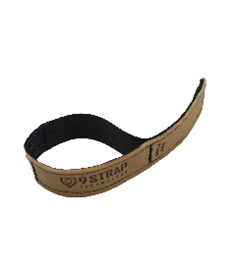
7) Force Play Slide: We had a game this week, where with a runner on first base, the ball was sharply hit on one bounce to the left fielder, who threw to second base in an attempt to get the force out. The runner slid through the base and made contact with the second baseman behind the base with his cleat (not malicious or above the knee, but contact). The umpires called the runner out from first and the batter‑runner out for force play slide violation. The offensive team coach stated his case very eloquently that this could not be a force play slide violation as the throw came from the outfield and not the infield. Ben Matlock and Perry Mason would have been proud. However, the umpires were correct, it was a force play slide violation when the runner made contact with the fielder behind the base. Where the thrown is made is not part of the rule.
Plays From Last Bulletin:
- In the third inning Washington enters the game for Vince in the 7th spot in the lineup. Later, in the fifth inning, 5, 6, and 7 are due up to bat. Jones (legal hitter) pops out; Vince re‑entered in the fourth inning, but comes to bat in the 6 hole and strikes out. Washington comes to bat in the 7th position in the lineup but flies out. The defensive coach, not sure what has just happened, goes to the plate umpire and appeals batting out of order. How do we rule? RULING: This is why our eyes roll up in our hear when batting out of order comes to light. No matter how well we understand the rule, confusion will reign. In this True Crimes Play, when Vince re‑enters he does so in the wrong position in the line‑up and thus is now an illegal substitute. When Washington bats, and takes a pitch, the at‑bat by Vince is legal (but he is still an illegal substitute). But we now have another illegal substitute in Washington (not a starter), who has re‑entered after being removed once. When we have illegal substitutes batting, that rule takes precedence over batting out of order. Both Vince and Washington are restricted to the bench for the balance of the game and the #8 hitter will come to bat. Nothing has happened that we can undo, we just continue on from this point.
- Early in the game, the coach enters Smith to pinch hit, then after the inning is over, re‑enters the starter. Later in the game, with a big lead, the coach puts all the players on the bench in the game, and Smith goes back to play center field. With a runner on third and first, Smith catches a fly ball and throws out the runner returning to first base while the runner on third scores. The offensive team coach comes to the plate umpire and asks how Smith can be in the game. What do we rule? RULING: Another illegal substitute play but this time the illegal substitute is on defense. Smith is an illegal substitute on defense who make a play and it is appealed before the next pitch. When we have this, the team on offense has the option of taking the result of the play or having the batter continue the at‑bat. In this instance if the team takes the play, we would score the run and the out on the fly ball as well as at first will stand. Smith will be replaced and restricted to the bench. If the team wants the batter to continue to bat, we take the runner who scored and put him back on third, and negate the other two outs and put the runner back on first. Smith is replaced and restricted. The batter then returns to bat with the count being what it was before the pitch he hit for an out. (If the pitch made on the batter was a “ball” we would add that to the count; if the pitch was hit, it does not become as strike for the count). Be careful. I had this once and cleared my counter and couldn’t remember what the count had been. The defense told me is 0‑2 and the offensive dugout was adamant it was 3‑0. My partner and I eventually figured it out with the help of a honest catcher.
Plays for Next Week:
- B1 hits a high fly ball that bounces off the top of the fence and goes on over the fence. The offense celebrates a home run. The defense contends it is a ground rule double. Two dads draped over the fence by a dugout offer advice.
- With a runner on first attempting to steal second base, the batter swings late and steps into the catcher who is still able to make a throw. The runner on first is safe at second, but slides past the base and is subsequently tagged out.
Please continue to send your questions and concerns. Again, thanks for your hard work. What you do matters.
Kyle McNeely
979‑446‑5522
Jkyle1974@aol.com


